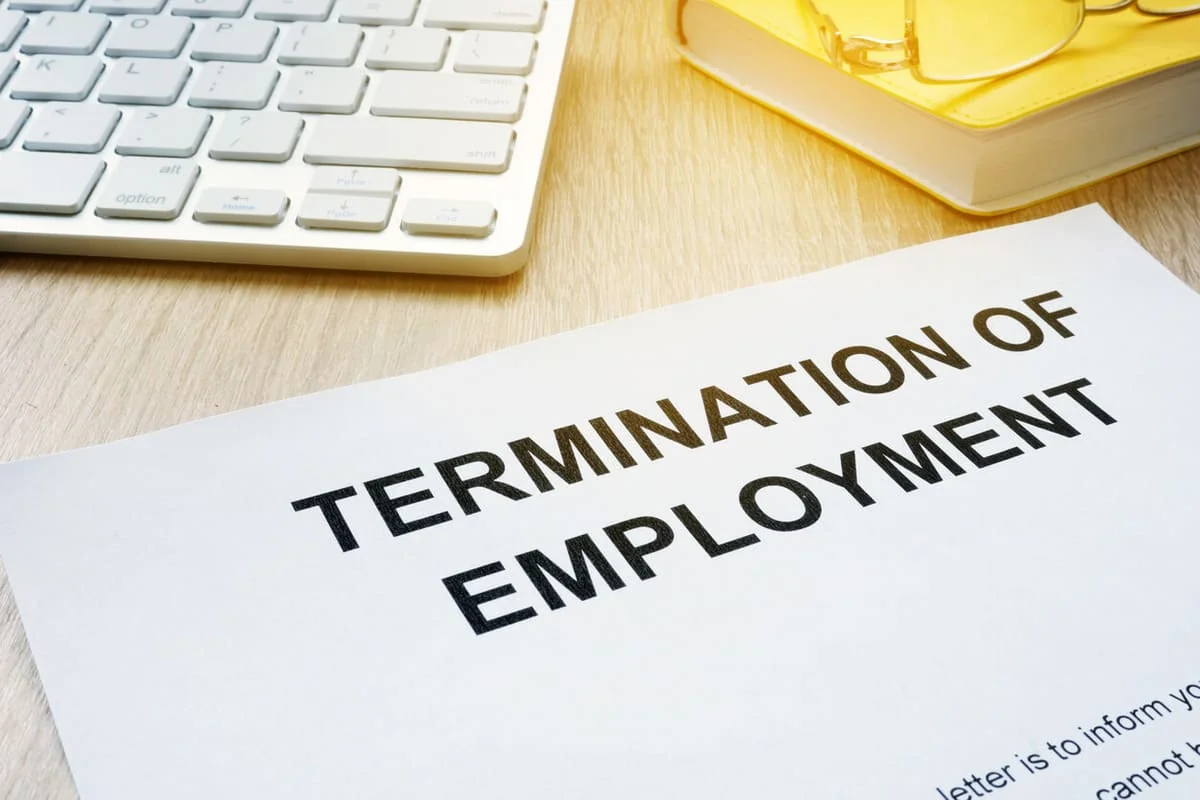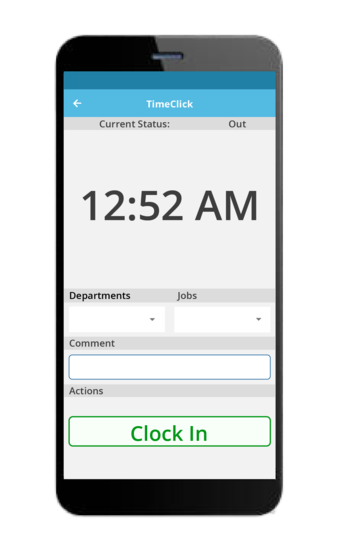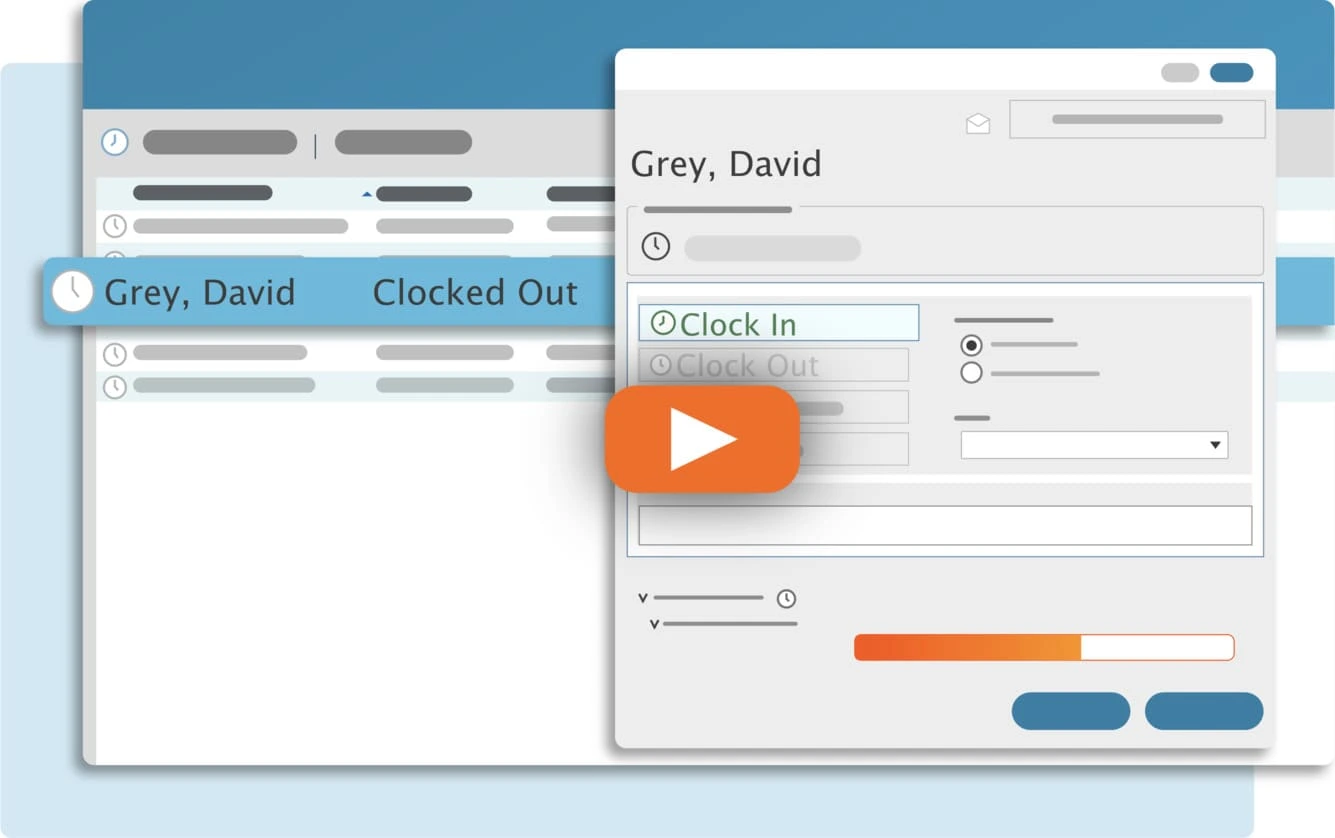Letting an employee go is never easy. It’s one of the most difficult decisions an employer has to make, and if not handled properly, it can also create serious legal headaches. Even though most U.S. employees work under at-will agreements—where employment can be ended at any time for a legal reason—there are still many laws that limit when and how terminations can happen.
In this guide, we’ll walk through the key rules employers need to know for 2025: including federal protections, state-specific rules, wrongful termination risks, final paycheck deadlines, severance pay, and more. Whether you’re handling a single termination or a large layoff, understanding the law upfront can help you avoid costly mistakes.
Table of Contents
- What Is Employment Termination?
- How Far Does At-Will Employment Really Go?
- Federal Laws That Limit When You Can Terminate
- How State Laws Change the Rules on Termination
- Common Legal Traps That Can Turn Into Wrongful Termination Claims
- Final Paychecks and Severance Rules
- When Severance Pay Is Required (and When It’s Not)
- Termination Notice Requirements
- Federal WARN Act
- State WARN Laws
- Best Practices for Legal Terminations
- Keep Thorough Documentation
- Apply Policies Fairly
- Check for Legal Protections
- Review Contracts and Agreements
- Plan the Termination Meeting
- Follow Final Paycheck Laws
- Protect Company Property and Information
- Handle the Process Professionally
- Termination Documentation Checklist
- Frequently Asked Questions
- Conclusion
What Is Employment Termination?

Termination simply means the end of an employee’s time with the company. While most people think of it as getting fired, it actually covers any situation where the working relationship ends—whether it’s the employee’s choice or the employer’s decision.
In most cases, terminations fall into one of two categories:
- Voluntary Termination: When the employee decides to leave, such as resigning, retiring, or stepping away for personal reasons.
- Involuntary Termination: When the company makes the decision to end employment. This can happen for a variety of reasons—performance issues, misconduct, layoffs, restructuring, or eliminating a role entirely.
No matter how or why it happens, every termination needs to follow federal, state, and local laws to help avoid legal problems down the road.
How Far Does At-Will Employment Really Go?
In most cases, at-will employment means you can let an employee go at any time, with or without a specific reason—as long as the decision is legal. But that freedom has limits. Terminating someone for the wrong reasons can still open the door to serious legal trouble.
Employers can’t fire workers for illegal reasons like discrimination, retaliation, breach of contract, or violating public policy. On top of that, many states have carved out exceptions to at-will employment, such as implied promises of job security or requirements to act in good faith.
Bottom line: even if your business operates under at-will rules, it’s always smart to double-check that no protected legal rights are being violated before making a termination decision.
Federal Laws That Limit When You Can Terminate

Even if your business operates in an at-will state, federal law still puts clear boundaries around when and why you can fire someone. If you cross those lines, you could face lawsuits, fines, or even government investigations. Here’s a quick overview of the major federal laws every employer needs to keep in mind before making a termination decision:
| Law | Termination Protections |
|---|---|
| Title VII of the Civil Rights Act | Bans terminations based on race, color, religion, sex (including pregnancy, sexual orientation, and gender identity), or national origin. |
| Age Discrimination in Employment Act (ADEA) | Protects workers age 40 and older from being fired because of age. |
| Americans with Disabilities Act (ADA) | Prohibits firing qualified employees due to disability and requires reasonable accommodations when possible. |
| Family and Medical Leave Act (FMLA) | Protects employees who take qualifying medical or family leave from being fired or punished for doing so. |
| Genetic Information Nondiscrimination Act (GINA) | Bars terminations based on genetic information or family medical history. |
| National Labor Relations Act (NLRA) | Protects employees from being fired for union organizing or discussing workplace conditions—even if there’s no union in place. |
| Occupational Safety and Health Act (OSHA) | Makes it illegal to fire workers for reporting unsafe working conditions. |
| Whistleblower Protections | Protects employees who report legal violations from retaliation or termination. |
| Worker Adjustment and Retraining Notification (WARN) Act | Requires larger companies to provide advance notice before mass layoffs or plant closures. |
| Uniformed Services Employment and Reemployment Rights Act (USERRA) | Protects service members’ jobs while they’re on military leave and guarantees their right to return after service. |
Failing to comply with any of these laws can expose your business to serious legal claims, back pay awards, and even reputational damage. Before moving forward with any termination, it’s worth reviewing whether any of these federal rules apply to your situation.
How State Laws Change the Rules on Termination

Federal law sets the baseline, but many states go further—adding their own rules around when and how you can terminate an employee. Depending on where your business operates, you may face stricter requirements around at-will exceptions, final paycheck deadlines, severance pay, or layoff notice obligations.
This state-by-state guide highlights some of the biggest differences you need to know when it comes to termination laws across the country. If you employ people in multiple states, make sure you're following the specific rules in each location.
Collapse Table| State | At-Will Status & Exceptions | Final Paycheck Timing | Severance Requirements | State WARN Act Coverage |
|---|---|---|---|---|
| Alabama | At-will; no recognized exceptions beyond discrimination laws. | Next regular payday (no specific law). | No mandatory severance. | No state WARN (federal WARN only). |
| Alaska | At-will; public policy, implied contract, and good faith exceptions recognized. | Quit: Next payday after 3 days; Fired: Within 3 working days. | No mandatory severance. | No state WARN. |
| Arizona | At-will; public policy, implied contract, and good faith exceptions recognized. | Quit: Next payday; Fired: 7 business days or next payday, whichever is earlier. | No mandatory severance. | No state WARN. |
| Arkansas | At-will; public policy and implied contract exceptions recognized. | Quit: Next payday; Fired: Next payday, penalty if unpaid after 7 days. | No mandatory severance. | No state WARN. |
| California | At-will; all exceptions broadly recognized (public policy, implied contract, good faith). | Quit: 72 hours or immediate if notice given; Fired: Immediate upon discharge. | Severance not required but WARN penalties may apply. | California WARN Act applies: 75+ employees, 60-day notice. |
| Colorado | At-will; public policy and implied contract exceptions recognized. | Quit: Next payday; Fired: Immediate upon discharge. | No mandatory severance. | No state WARN (federal WARN only). |
| Connecticut | At-will; public policy and implied contract exceptions recognized. | Quit: Next payday; Fired: Next business day. | No mandatory severance. | No state WARN (federal WARN applies). |
| Delaware | At-will; public policy, implied contract, and good faith exceptions recognized. | Quit/Fired: Next payday. | No mandatory severance. | Plant Closing Law: 60-day notice for 100+ employees, 50+ affected. |
| District of Columbia | At-will; public policy and implied contract exceptions recognized. | Quit: Next payday or 7 days; Fired: Next business day. | No mandatory severance. | No state WARN (federal WARN applies). |
| Florida | At-will; no recognized public policy, implied contract, or good faith exceptions. | Next payday (no specific law). | No mandatory severance. | No state WARN (federal WARN only). |
| Georgia | At-will; no recognized exceptions beyond discrimination laws. | Next payday (no specific law). | No mandatory severance. | No state WARN (federal WARN only). |
| Hawaii | At-will; public policy and implied contract exceptions recognized. | Quit: Immediate or next payday; Fired: Immediate or next business day. | No mandatory severance. | Hawaii Dislocated Workers Act: 60-day notice for 50+ employees. |
| Idaho | At-will; public policy, implied contract, and good faith exceptions recognized. | Quit/Fired: Next payday or 10 days; 48 hours if employee requests early payment. | No mandatory severance. | No state WARN (federal WARN applies). |
| Illinois | At-will; public policy and implied contract exceptions recognized. | Quit/Fired: Next scheduled payday. | No mandatory severance. | Illinois WARN Act: 75+ employees, 60-day notice, 25+ affected. |
| Indiana | At-will; public policy and implied contract exceptions recognized. | Quit/Fired: Next scheduled payday. | No mandatory severance. | No state WARN (federal WARN applies). |
| Iowa | At-will; public policy and implied contract exceptions recognized. | Quit/Fired: Next scheduled payday. | No mandatory severance. | Iowa WARN Act: 25+ employees, 30-day notice. |
| Kansas | At-will; public policy and implied contract exceptions recognized. | Quit/Fired: Next scheduled payday. | No mandatory severance. | No state WARN (federal WARN applies). |
| Kentucky | At-will; public policy and implied contract exceptions recognized. | Quit/Fired: 14 days or next payday, whichever is later. | No mandatory severance. | No state WARN (federal WARN applies). |
| Louisiana | At-will; very limited exceptions under civil law; good faith not generally applicable to termination. | Quit/Fired: Next payday or within 15 days, whichever comes first. | No mandatory severance. | No state WARN (federal WARN applies). |
| Maine | At-will; limited public policy exceptions, implied contract generally not recognized. | Quit/Fired: Next scheduled payday. | Yes — plant closings require severance (one week per year of service for 100+ employees). | Plant Closing Act: 100+ employees, 90-day notice. |
| Maryland | At-will; public policy and implied contract exceptions recognized. | Quit/Fired: Next scheduled payday. | No mandatory severance. | No state WARN (federal WARN applies, state "encourages" notice). |
| Massachusetts | At-will; public policy, implied contract, and good faith exceptions all recognized. | Quit: Next payday or following Saturday; Fired: Immediate on termination. | No mandatory severance. | No state WARN (federal WARN applies, but state expects notification to rapid response team). |
| Michigan | At-will; public policy, implied contract, and limited good faith exceptions recognized. | Quit/Fired: Next scheduled payday (1 day for farm workers). | No mandatory severance. | No state WARN (federal WARN applies, encouraged to notify state). |
| Minnesota | At-will; public policy and implied contract exceptions recognized. | Quit: 5 days or 20 days max; Fired: 24 hours after written demand. | No mandatory severance. | No state WARN (federal WARN applies, state provides layoff assistance). |
| Mississippi | At-will; no recognized exceptions except statutory protections. | Quit/Fired: Next scheduled payday (no specific law). | No mandatory severance. | No state WARN (federal WARN applies). |
| Missouri | At-will; public policy and implied contract exceptions recognized. | Quit: No specific law (next payday standard); Fired: Immediate upon discharge. | No mandatory severance. | No state WARN (federal WARN applies). |
| Montana | Not at-will after probation; terminations must be for good cause after 6 months under WDEA. | Quit: 15 days or next payday; Fired: Immediate (4 hours or next business day). | No mandatory severance. | No state WARN (federal WARN applies). |
| Nebraska | At-will; implied contract and limited public policy exceptions recognized; good faith recognized narrowly. | Quit/Fired: Next payday or within 2 weeks, whichever comes first. | No mandatory severance. | No state WARN (federal WARN applies). |
| Nevada | At-will; public policy, implied contract, and good faith exceptions recognized. | Quit: 7 days or next payday; Fired: Within 3 days of termination. | No mandatory severance. | No state WARN (federal WARN applies). |
| New Hampshire | At-will; public policy and implied contract exceptions recognized. | Quit: 72 hours if notice given; Fired: 72 hours. | No mandatory severance. | New Hampshire WARN Act: 75+ employees, 60-day notice, 25+ affected. |
| New Jersey | At-will; public policy and implied contract exceptions recognized. | Quit/Fired: Next scheduled payday. | Yes — mandatory severance for mass layoffs under NJ WARN: 1 week per year of service. | New Jersey WARN Act: 100+ employees, 90-day notice, 50+ affected. |
| New Mexico | At-will; public policy and implied contract exceptions recognized. | Quit/Fired: Within 5 days (10 days for commissions). | No mandatory severance. | No state WARN (federal WARN applies). |
| New York | At-will; public policy exceptions limited to statutes; implied contract very limited. | Quit/Fired: Next scheduled payday. | No mandatory severance. | New York WARN Act: 50+ employees, 90-day notice, 25+ affected. |
| North Carolina | At-will; public policy and implied contract exceptions recognized. | Quit/Fired: Next scheduled payday. | No mandatory severance. | No state WARN (federal WARN applies). |
| North Dakota | At-will; public policy and implied contract exceptions recognized. | Quit: Next payday; Fired: Certified mail if address provided. | No mandatory severance. | No state WARN (federal WARN applies). |
| Ohio | At-will; public policy and implied contract exceptions recognized. | Quit/Fired: Next payday or within 15 days, whichever is sooner. | No mandatory severance. | No state WARN (federal WARN applies). |
| Oklahoma | At-will; public policy and implied contract exceptions recognized. | Quit/Fired: Next scheduled payday. | No mandatory severance. | No state WARN (federal WARN applies). |
| Oregon | At-will; public policy and implied contract exceptions recognized. | Quit: Immediate if 48-hour notice, else 5 days; Fired: Next business day. | No mandatory severance. | No state WARN (federal WARN applies). |
| Pennsylvania | At-will; public policy and implied contract exceptions recognized. | Quit/Fired: Next scheduled payday. | No mandatory severance. | No state WARN (federal WARN applies). |
| Rhode Island | At-will; no general public policy, implied contract, or good faith exceptions recognized. | Quit/Fired: Next scheduled payday; 24 hours if business relocates or closes. | No mandatory severance. | No state WARN (federal WARN applies). |
| South Carolina | At-will; public policy exception recognized, limited implied contract. | Quit/Fired: 48 hours or next payday, not exceeding 30 days. | No mandatory severance. | No state WARN (federal WARN applies). |
| South Dakota | At-will; public policy and implied contract exceptions recognized. | Quit/Fired: Next payday or when company property returned. | No mandatory severance. | No state WARN (federal WARN applies). |
| Tennessee | At-will; public policy and implied contract exceptions recognized. | Quit/Fired: Next payday or within 21 days, whichever is later. | No mandatory severance. | Tennessee WARN: 50–99 employees covered, 60-day notice. |
| Texas | At-will; very narrow public policy exception, no implied contract or good faith exceptions. | Quit: Next payday; Fired: Within 6 calendar days. | No mandatory severance. | No state WARN (federal WARN applies). |
| Utah | At-will; public policy and implied contract exceptions recognized. | Quit/Fired: Final wages due within 24 hours. | No mandatory severance. | No state WARN (federal WARN applies). |
| Vermont | At-will; public policy and implied contract exceptions recognized. | Quit: Next payday or following Friday; Fired: Within 72 hours. | No mandatory severance. | No state WARN (federal WARN applies). |
| Virginia | At-will; public policy and implied contract exceptions recognized. | Quit/Fired: Next scheduled payday. | No mandatory severance. | No state WARN (federal WARN applies). |
| Washington | At-will; public policy and implied contract exceptions recognized. | Quit/Fired: Next scheduled payday. | No mandatory severance. | Washington Mini-WARN: 50+ employees, 60-day notice starting July 2025. |
| West Virginia | At-will; public policy and implied contract exceptions recognized. | Quit/Fired: Next scheduled payday. | No mandatory severance. | No state WARN (federal WARN applies). |
| Wisconsin | At-will; public policy and implied contract exceptions recognized. | Quit/Fired: Next scheduled payday; 24 hours if business shuts down. | No mandatory severance. | Wisconsin WARN: 50+ employees, 60-day notice, 25+ affected. |
| Wyoming | At-will; public policy, implied contract, and good faith exceptions recognized (limited). | Quit/Fired: Next scheduled payday. | No mandatory severance. | No state WARN (federal WARN applies). |
While at-will employment is still the default in most states, the details can vary a lot. Always double-check state law before moving forward with any termination—especially for layoffs, final paychecks, or larger workforce reductions.
Simplify Time Tracking with TimeClick!
Download our free trial—simple, secure, offline tracking, no fluff.

Common Legal Traps That Can Turn Into Wrongful Termination Claims

Just because you have the right to terminate doesn’t mean you’re automatically protected from legal claims. Many terminations lead to lawsuits because employers overlook certain legal protections. Here are some of the most common mistakes that trigger wrongful termination claims:
- Discrimination: Firing someone because of race, gender, pregnancy, religion, age (40+), disability, national origin, sexual orientation, or genetic information is illegal under federal and state law.
- Retaliation: Terminating an employee for reporting harassment, wage violations, safety concerns, discrimination, or for using protected leave can lead to serious legal consequences.
- Public policy violations: You can’t fire someone for reasons that violate public policy—for example, reporting illegal activity, filing a workers’ comp claim, serving on a jury, or refusing to break the law.
- Contract violations or misclassification: Firing someone who has contractual job protections—or who’s been improperly classified as exempt or an independent contractor—can lead to breach of contract or wage claims. Learn more about proper employee classification here.
- Constructive discharge: Forcing someone to quit by creating an intolerable work environment can be treated like a wrongful termination, especially if it’s tied to harassment, discrimination, or retaliation.
These types of claims often result in back pay, reinstatement, legal fees, and sometimes even punitive damages. The best way to avoid problems is to fully understand the legal risks ahead of time—and document your decisions carefully.
Final Paychecks and Severance Rules

Once an employee’s job ends, you’re legally required to pay out any final wages they’ve earned—including unpaid hours, overtime, commissions, or unused PTO if your state requires it. When that final paycheck is due depends heavily on state law.
Some states require immediate payment if you terminate someone. Others give you until the next regular payday or a set number of days after separation. You’ll find those state-by-state deadlines listed in the table above.
When Severance Pay Is Required (and When It’s Not)
In most cases, severance pay is not required by law. Many companies offer it voluntarily as part of a separation agreement, either to help the employee transition or to limit potential legal claims.
However, a few states do have severance requirements in specific situations:
- New Jersey: Requires mandatory severance for certain mass layoffs covered under its state WARN Act (one week of pay for every year of service).
- Maine: Requires severance for certain plant closings involving 100 or more employees (one week of pay for each year of service).
If you offer severance, make sure your agreements comply with any federal rules—especially the Older Workers Benefit Protection Act (OWBPA), which applies if the employee is over 40.
Termination Notice Requirements
In most cases, you aren’t legally required to give advance notice when letting an individual employee go—unless you’ve made promises in a contract, policy, or employee handbook that say otherwise.
But larger layoffs and plant closures are a different story. That’s where both federal and state WARN laws kick in with strict notice requirements.
Federal WARN Act
Under the federal WARN Act, companies with 100 or more full-time employees generally must give 60 days’ written notice if they:
- Shut down a plant or facility where 50 or more workers will lose their jobs, or
- Lay off 500 or more employees, or 50–499 workers if that’s at least 33% of the worksite’s total workforce.
Failing to comply can result in back pay for affected employees, plus civil penalties.
State WARN Laws
Many states have their own mini-WARN laws that go beyond federal requirements. Some apply to smaller companies, cover smaller layoffs, or require more notice than 60 days. In some cases, severance payments may also be required. You’ll find the full state-by-state WARN rules in the table above.
Best Practices for Legal Terminations
Even if a termination is fully legal, the way you handle it matters. A well-managed termination process reduces legal risks, protects your business, and shows professionalism. Here are some steps every employer should follow:
Keep Thorough Documentation
Document any performance problems, policy violations, or misconduct that led up to the termination. Written warnings, performance reviews, and improvement plans can all help support your decision if it's ever challenged.
Apply Policies Fairly
Enforce your policies consistently for all employees. If similar situations are handled differently, it may open the door to discrimination or retaliation claims.
Check for Legal Protections
Before finalizing the decision, check whether the employee recently engaged in protected activity—like filing a complaint, taking leave, or reporting a violation—or falls into a legally protected category. If so, make sure your documentation clearly shows a legitimate business reason for the termination.
Review Contracts and Agreements
Look at any employment contracts, severance agreements, or union rules that might affect the process. Follow any required notice periods, payment terms, or dispute procedures.
Plan the Termination Meeting
Prepare what you'll say ahead of time. Keep the conversation short, professional, and focused on the decision. Avoid unnecessary details or emotional discussions. Always follow up with a written termination letter.
Follow Final Paycheck Laws
Make sure you issue the final paycheck on time according to your state’s rules. Include any owed PTO, commissions, or bonuses. Provide any required documents like COBRA notices or unemployment information.
Protect Company Property and Information
Collect company property such as laptops, keys, and ID badges. Immediately revoke system access to protect company data and prevent security risks.
Handle the Process Professionally
Always conduct terminations in private, treat the employee with respect, and avoid public embarrassment. A professional approach helps prevent unnecessary conflict and protects your company’s reputation.
Termination Documentation Checklist

Good documentation is one of the best ways to protect your business when ending someone’s employment. Use this checklist to make sure you’ve covered everything and minimized your legal risks:
- Records of any performance issues, policy violations, or misconduct that led to termination.
- Copies of written warnings, performance improvement plans, and prior disciplinary actions.
- Supervisor notes, meeting summaries, or coaching records related to the employee’s performance.
- Confirmation of any protected activities the employee participated in (such as complaints, leave requests, or whistleblower reports).
- Copies of employment contracts, severance agreements, or collective bargaining agreements that apply.
- Review to ensure similar situations were handled consistently for other employees.
- A completed termination letter explaining the decision in writing.
- Proof that final wages were paid on time and any accrued PTO, commissions, or bonuses were included.
- Confirmation that all company property was collected and system access was revoked.
- Copies of any required exit documents, such as COBRA forms or unemployment information.
Solid documentation shows that your decision was fair, well-supported, and compliant with the law—making it much harder for legal claims to succeed.
Frequently Asked Questions
Here are some of the most common questions employers have when it comes to employee terminations and staying compliant.
Do I have to give a reason when terminating an employee?
In most at-will situations, you’re not legally required to give a reason. However, many employers still choose to give a brief, honest explanation to avoid confusion or speculation. If you do provide a reason, make sure it’s accurate, consistent, and backed by your documentation.
Can I fire an employee for any reason under at-will employment?
At-will employment means you can terminate someone for any legal reason—or no reason at all. But it doesn’t allow you to fire someone for illegal reasons like discrimination, retaliation, or violations of public policy. Those situations can still lead to legal claims.
Is severance pay required when terminating an employee?
In most cases, severance isn’t required unless you’ve promised it in a contract, company policy, or union agreement. Some states like New Jersey and Maine do require severance for certain large layoffs under their WARN laws. Otherwise, it’s usually voluntary.
How quickly must I issue a final paycheck?
Final paycheck deadlines depend on state law. Some states require immediate payment after termination; others allow payment by the next payday or within a set number of days. Whether the employee quit or was fired can also affect the deadline.
What should I avoid saying during a termination meeting?
Keep the conversation short, professional, and focused on the business reason for termination. Avoid emotional statements, personal opinions, or discussing protected characteristics. Stick to the facts and follow up with a written termination letter.
Conclusion
Terminations are one of the most sensitive—and legally complex—parts of running a business. Even in at-will states, there are clear federal and state rules you need to follow when ending someone’s employment. The more you stay informed, document your decisions, and apply your policies fairly, the more you reduce your legal risks and protect both your company and your employees.
For more help staying compliant with labor laws, explore our full library of employer guides:
And if you’re looking for easy-to-use time tracking software that helps you stay compliant with wage laws, TimeClick can help.
Track hours, manage PTO, and stay compliant — all in one easy-to-use time tracking system built for small businesses.
Start your FREE TimeClick Trial Today.

